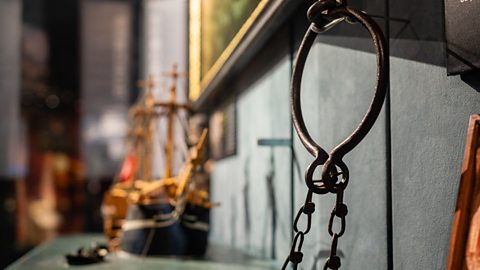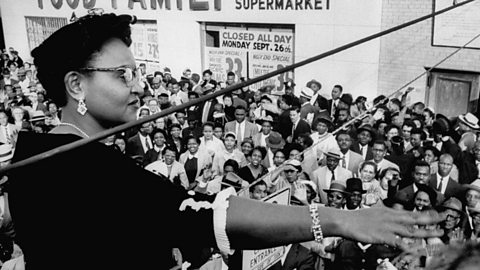By Dr Onyeka Nubia, University of Nottingham, and Edgehill, a historian of British history.
You might think that the only people in medieval and early modern England were Normans, Anglo- Saxons and Vikings.
You might believe no space existed for Africans in that society. But we now know some cities in pre-colonial England had diverse populations and Africans lived there.
But who were they and what did they do?
Africans in Medieval England (1066 -1485)
The medieval English writer Richard Devizes describes London as being populated by тGaramantesт (Moorish Africans), and тmen from all nationsт that тfill all the houses.т These Africans were described by various terms such as: тBlackт, тEthiopianт (a word used at the time to describe all Africans), тMoor,т and тBlackamoore.т Other terms such as тSaracenт were also used to refer to Africans, as well as people from elsewhere, such as Western Asia. Some of these terms are now considered derogatory.
Bartholomew was an African on the run in Nottingham in the 13th century. He is mentioned in the Pipe Roll (21 June, 1259), where he was called an тEthiopianт and a тSaracen.т The Pipe Roll says, Bartholomew was brought to England by тRoger de Lyntin.т The roll also gives тa mandate to arrestт Bartholomew, for тrunning away from his said lord [Roger de Lyntin].т Bartholomew may have been on his way to the city of Nottingham to escape his lordтs authority.
The тIpswich Manт in Grey Friars Monastery
Another African, nicknamed the тIpswich Manт, was buried in the cemetery of Grey Friars monastery in Ipswich c. 1225-1285. We do not know where in Africa he originated from. But it is possible that his presence in the monastery is linked to the medieval churchтs international connections. Or he may be connected to the Crusades.
The Crusades were when Europeans went to fight тin the Holy Landт against non-Christians. As a result of this conflict, sometimes Saracens (a historical term that should not be used to refer to someone now) came to England. In 1272, during the Ninth Crusade, тfour Saracensт arrived in England with the English knight Thomas de Clara. Clara was connected to Robert Tiptoft, the benefactor of the Grey Friars monastery. So the Ipswich Man may have been one of those four Saracens and this could explain why he was buried in that cemetery.
 Image source, Heritage Images
Image source, Heritage ImagesAfricans in Early Modern England (1485-1660s)
Africans were a significant presence in cities such as London, Plymouth and Bristol, but were also present in: Derby, Leicester, and Northampton. Africans also lived in rural villages such as Barnstable (North Devon), Holt (Worcestershire), and Hatherleigh (West Devon).
Elizabeth I had her тfavourite lytle Blackamore,т the powerful politician Robert Cecil had a servant named Fortunatus, and Katherine of Aragon her тlady of the bedchamberт т Catalina de Motril.
Some of these Africans and their descendants were born in Tudor England and others had origins from the Iberian Peninsula (Spain and Portugal). Africans also came to England from kingdoms in West and North Africa and some people arrived via the Caribbean and Central America. These last sets of peoples were often connected to English merchant adventurers.
It is not possible to know the exact number of Africans living in early modern England. But they were certainly more than a few isolated individuals. In the cosmopolitan parish of St Botolph without Aldgate (London) Africans were 5% of the total population.
John Blanke тthe black trumpeterт was employed in the English Tudor court and depicted twice on the Westminster Tournament Roll of 1511 that celebrated the birth of the Henry VIII and Katherine of Aragonтs son.
In Londonтs Cheapside, a famous but unnamed African craftsman lived between the years 1553-1558. This man of African descent came from the Iberian Peninsula and brought the art for making тfine Spanish needlesт to England. William Harrison described him as someone who would never share the secrets of his art and so the historian Thomas Fuller states his art тdyed with him.т
African women in Early Modern England
Other people of African descent include Mary Fillis of Morisco. This young woman was about twenty years old when she was baptised in St Botolph, on 3 April 1596. In contemporary parish records she was called тa Black,т тa blackamooreт and тof Morisco.т Her father, Fillis of Morisco had the profession of a basket and shovel maker which meant that he was probably a metal worker. And Moorish metalworkers were famous throughout Europe.
Another woman of African descent living in early modern England was Grace of Hatherleigh (Devon). Her records show tragic moments in Graceтs familyтs life. Both of Graceтs children Honour and Rebecca die early, the latter just after a year and four months. Grace herself disappears from the records after 1613.
Voting, owning land and writing wills in Tudor England
Henrie Anthonie Jetto was baptised when he was 26 in 1596. He was described as тa Blackт a тBlack More,т and тJettoт (from the French word for тBlackт). Initially, Jetto тbelong[ed]т to Henry Bromley and lived in Holt. But this status changed! By the time Jetto wrote his own will on 20 September 1626, he could vote, owned land and referred to himself as тJetto of Holt.т Jetto married тPresidaт a woman whose ethnicity is unknown. They had five children together. And Jetto went on to have thirty two grandchildren т his descendants are alive today in Holt.
In England, there were also African merchants, mapmakers, explorers and nobles and included people such as Dederi Joaquah from the тcountry of Cestosт in West Africa. Joaquah was baptised in St Mildredтs Poultry, London on 1 January 1611. Joaquah came to England through diplomatic missions from West African kings, seeking allies against the Ottomans, Spanish and Portuguese.
What was the 1834 Abolition of Slavery Act?
And what did it mean for slavery in the UK?

Six key events in black history you may not know about
The Bristol bus boycott, the killing of Emmett Till and other events you may not have heard about.

What is Juneteenth?
On 19 June 1865, the news of the abolition of slavery reached Texas. The day became known as Juneteenth.
